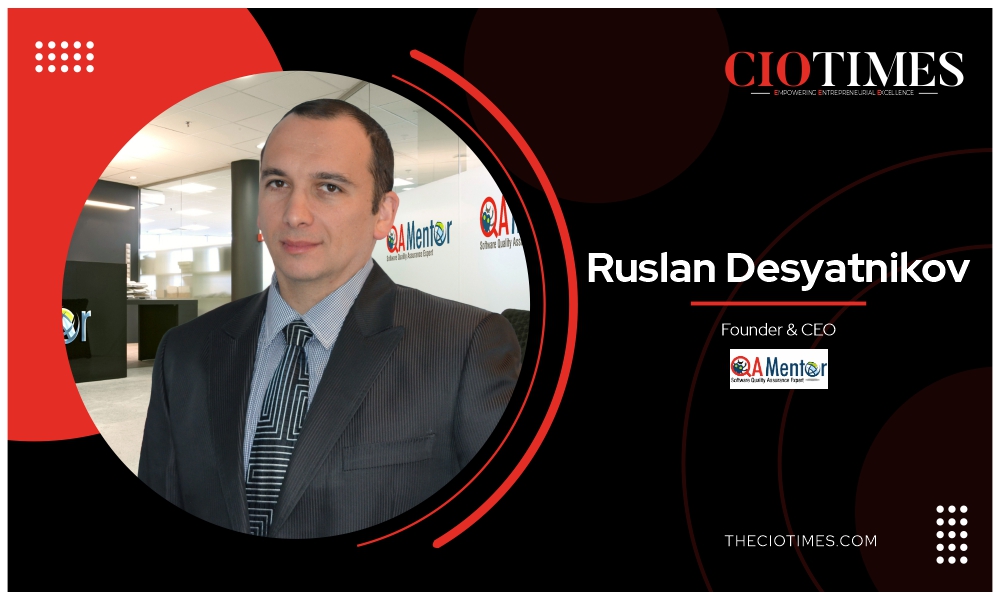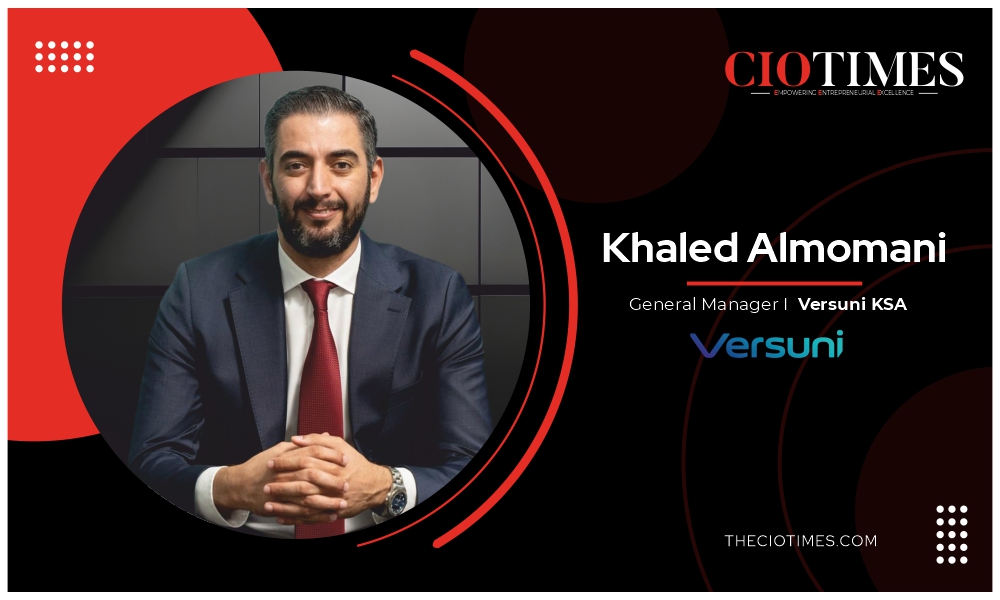The COVID-19 pandemic disrupted the global education system on an unprecedented scale, causing widespread uncertainty and necessitating rapid adaptation to remote learning. However, as challenging as this period has been, it has also catalyzed the overcoming of barriers to technology adoption across different education levels and modalities.
For instance, the necessity of remote learning led to a significant acceleration in the use of educational technology, with everything from virtual classrooms to AI-powered learning platforms seeing widespread adoption. Massive funding also enabled rapid research and development in these areas, leading to swift advancements in emerging technologies. We’ve seen impressive strides in fields such as generative AI and spatial computing, reshaping the landscape of what’s possible in education.
As we consider the path to recovery, it’s crucial to recognize that we can’t simply revert to pre-pandemic norms. The world has changed, and our educational strategies must change with it. We should aim to prepare students for the reality they will face, which may look quite different from what previous generations encountered.
This may involve re-evaluating long-held assumptions about what skills are necessary for students to thrive. For instance, we should question traditional approaches to teaching writing, considering the array of digital communication tools and platforms that now play a significant role in our lives. Similarly, we need to reassess the types of quantitative training students require, given the rise of data-driven decision-making in many sectors.
In his current role as Lead XR Disruptor and Department Head of Art History and Visual Culture for the College of Arts and Humanities, James Hutson has taken up this opportunity to not just recover but to reimagine education. By embracing the lessons and opportunities from the challenging period, he has been diligently working on building a curriculum and educational system that is more resilient, more flexible, and better suited to the evolving needs of students and the realities of the 21st century. He primarily focuses on the intersection of technology and education. A significant part of his work involves exploring the possibilities of Extended Reality (XR)—encompassing Virtual Reality (VR), Augmented Reality (AR), and Mixed Reality (MR)—in creating immersive and interactive learning environments.
Ideas for the Generations to Come
A significant achievement for James has been the development of a system-wide adoption and integration plan for XR technologies. With the support of VR Champions—individuals committed to advocating and implementing VR in educational settings—he established an XR lab that serves as a space for innovation, exploration, and research. This endeavor enables faculty and students to explore the potential of XR in enhancing learning experiences, from visualizing complex concepts to creating immersive simulations for practical learning.
Additionally, his role involves overseeing pedagogic research aimed at continuous learning improvement. They utilize the insights gained from the XR implementations to refine the teaching strategies and create more effective and engaging learning experiences.
More recently, James has introduced the AI Ambassadors initiative, a program aimed at fostering a culture of AI understanding and adoption within the College of Arts and Humanities. The AI Ambassadors are responsible for promoting AI literacy, exploring potential applications of AI in their respective fields, and facilitating institutional readiness for AI adoption. To assess their progress and ensure that they’re effectively prepared for AI integration, James developed an instrument for institutional readiness. This tool allows them to gauge their current capabilities, identify areas for improvement, and strategize the most effective pathways toward AI adoption.
Furthermore, his ongoing research and work are centred on exploring the pedagogic and applied study of AI across all disciplines. This cross-disciplinary approach aims to promote a comprehensive understanding of AI and its potential applications, fostering innovation and ensuring that all students are equipped with the skills and knowledge necessary to navigate the increasingly AI-driven world.
A Goal-Oriented Leader
James was always fascinated by the profound ways in which art could communicate complex ideas and emotions, inspire creativity, and influence culture. His academic path led him to earn his MA and PhD in Art History and piqued his interest in the deeper meaning and historical significance of artworks solidified during this time.
Despite his strong ties to the world of art, he also found himself increasingly drawn towards the rapidly-evolving field of technology. This fascination was especially poignant about how technology intersects with and influences art and culture, which led him to explore the spheres of artificial intelligence, neuro-humanities, and digital humanities. He also holds an MA in Leadership and an MA in Game Design, which allowed him to delve into the gamification of education—a field that combines pedagogical strategies with the engaging elements of game design to create immersive learning experiences.
His current pursuit of a PhD in Artificial Intelligence at Capitol Technology University stems from his belief that AI has immense potential to revolutionize various sectors, including education. He’s particularly interested in exploring how AI can be leveraged to foster neurodiversity, improve learning outcomes, and create more inclusive educational environments. What drew him was the prospect of continuous learning, the possibility of discovering something new, and the opportunity to shape the future of education. “It’s a constantly evolving field that sits at the crossroads of art, culture, and technology, and it challenges me every day to think creatively and critically. I believe my diverse academic and professional experiences give me a unique perspective on this intersection, and I’m excited about the potential for transformative change in the world of education,” says James.
James’ working style can be encapsulated as collaborative, inquisitive, and goal-oriented. He believes that constant collaboration is key to innovative thinking and problem-solving. By bringing together diverse perspectives and expertise, we can create more holistic and effective solutions. This is particularly pertinent in his field where the interplay between art, culture, and technology requires an interdisciplinary approach. In his day-to-day work, whether it’s administrative tasks or academic research, he strives to foster an environment that values teamwork, open communication, and mutual respect.
Continuous curiosity underpins all his endeavours. He is driven by an insatiable desire to learn, explore the unknown, and question established norms. This intellectual curiosity fuels his daily research goals as he seeks to uncover new insights into the intersection of art and technology, understand how neurodiversity influences learning processes, and investigate the potential of immersive realities in education. “Above all, I am deeply committed to my research. I set clear, achievable daily goals to ensure that I’m always making progress. This goal-oriented approach keeps me focused and motivated, allowing me to navigate the complexities of my work with determination and resilience. Despite the challenges that may arise, my relentless curiosity and collaborative spirit ensure that I am consistently moving forward on the path of discovery and innovation,” shares James.
The Challenge of Transition
The biggest challenge James faced in his career was transitioning from a faculty position to an administrative role. This move required him to take on a host of new responsibilities, including the task of creating 26 new online and graduate programs for the School of Arts, Media, and Communication. The scale of this task was immense, and it demanded not just an understanding of each subject area, but also a deep knowledge of pedagogy, curriculum design, and digital learning platforms.
“This was a significant departure from my comfort zone, and it required me to rapidly acquire new management and leadership skills. Furthermore, I needed to familiarize myself with many new technical skills to effectively navigate the world of online education and design courses that were both engaging and effective for students,” he shares.
The transition was demanding, but it was also an opportunity for growth. During this period, the institution was undergoing internal restructuring, which added another layer of complexity to James’ new role. But he took the lessons learned from this challenge and became even more agile and adaptive. He had to be open to new ideas, collaborative in his approach, and ready to pivot quickly when needed. From this experience, he learned firsthand about the critical importance of adaptability, collaboration, and openness to new ideas in the realm of higher education. It taught him to not fear venturing outside his comfort zone, as it is often where the most significant learning and growth occurs. It has made him a better leader, a more effective educator, and a more resilient individual, able to navigate the complexities of the modern educational landscape.
Getting Students VUCA-ready
James’ current research is entirely dedicated to preparing students to navigate the dynamic and often unpredictable world. In his collaborations with over 65 scholars, both nationally and internationally, James has come to understand that the best way we can prepare our students for a VUCA world is by focusing on the development of metacognitive skills and fostering a mindset of lifelong learning. “Metacognition refers to the ability to think about one’s own thinking, and it’s a critical skill in an ever-changing environment. It empowers students to self-assess, adjust their learning strategies, and understand their own learning processes,” he explains.
James emphasizes the need to design educational experiences and curricula that support active, hands-on learning. This approach allows students to develop and refine durable skills—those that will serve them well regardless of the specific tasks at hand. These include critical thinking, problem-solving, communication, and collaboration skills, which are all transferable across different disciplines and contexts.
He also suggests that the focus of education should shift away from solely discipline-specific knowledge and towards these transferable skills. While subject matter knowledge is undoubtedly important, the ability to think critically, solve problems creatively, and adapt to new situations is invaluable in a VUCA world. These are the skills that will allow our students to navigate the complexities of wicked problems—those that are complex, unpredictable, and ever-changing.
“In essence, preparing students for a VUCA world requires a shift in educational paradigms. It calls for an emphasis on metacognition, lifelong learning, active engagement, and the development of transferable, durable skills. It’s about equipping students not just with knowledge, but with the skills and mindset to adapt, learn, and thrive, no matter what the future holds,” sums up James.
Role of Technology in Educational Institutes
Until 2023, incorporating technology in meaningful ways was often an expensive endeavour, with a degree of uncertainty surrounding the viability and longevity of various platforms, particularly those offered by startups. However, with the recent proliferation of AI-based solutions, the landscape has changed dramatically. There is now a clear path for educational institutions to leverage different APIs (Application Programming Interfaces) to significantly improve the delivery of educational services.
AI technologies offer a myriad of possibilities. One area where they can be particularly impactful is personalized learning. AI can analyse data on students’ learning behaviours, strengths, and weaknesses to tailor educational content and strategies to each learner. This personalized approach can enhance student engagement, improve learning outcomes, and help educators identify and address learning gaps effectively.
The landscape of education is continuously shifting, influenced by various trends that can have both positive and negative impacts on the system. One trend, points out James, that could negatively impact education is the attempt to revert to pre-pandemic “normalcy”. There’s a tendency in some sectors to view the changes brought about by the pandemic as temporary disruptions, rather than opportunities for fundamental change. Retaining pre-pandemic practices, curricula, and expectations without considering the lessons we’ve learned during this period could limit the potential for innovation and improvement in education.
Similarly, the over-politicization of education could hinder progress. When decisions about education are driven more by political considerations than by what’s best for students and educators, the quality of education can suffer. This could potentially restrict academic freedom and limit access to diverse learning materials, preventing students from becoming engaged, responsible, and ethically-minded global citizens.
Hopes for the Future
In the next few years, James would like to see a significant re-evaluation of priorities, training, and spending in the education sector. This should begin with a thorough needs assessment and SWOT analysis that acknowledges both the internal and external realities faced by educational institutions.
This re-evaluation should identify the skills that will be truly useful and in demand in the future, moving away from solving outdated problems with old pedagogical tools and methods. Once we identify these skills, we should create a five-year implementation plan to integrate them into the curriculum.
James strongly believes that the integration of artificial intelligence (AI) into our educational systems, starting as early as early childhood education, is paramount. The potential of AI to revolutionize learning is immense, and introducing it at an early stage will ensure our students are adept at leveraging AI technologies. AI can personalize the learning process, adapt to individual student needs, and foster creativity and critical thinking skills. The broad adoption of AI also holds the promise of dramatically lowering the cost of education, making it more accessible to all. This could democratize education, reducing disparities and offering quality learning opportunities to students irrespective of their socioeconomic status.
Further, the value proposition of postsecondary institutions must be reframed. As the job market evolves, so should our approach to higher education. It’s no longer just about obtaining a degree; it’s about developing adaptable, transferrable skills that will serve students throughout their careers. This requires a shift in mindset and a commitment to innovative, future-focused education.
“Finally, the focus should be on fostering lifelong learning and metacognitive skills. In an ever-changing world, the ability to adapt, learn, and think critically is invaluable. Therefore, embedding these competencies into the educational experience is critical. In essence, the future of education needs a strategic, forward-looking approach that takes into account the evolving global landscape. By focusing on these areas, we can ensure that our education system is not only relevant but is also a proactive player in shaping the future,” concludes James.
Quote: “Don’t put off until tomorrow what you can do today”.
Quote: “I strive to disrupt traditional paradigms and explore how immersive realities can enrich education and break down physical and financial barriers for students.”





